Orkney is perhaps best known, from a tourist perspective, for its amazing Neolithic monuments. Most of these date back to between 3,000 and 2,500 BC. 5,000 years ago it is estimated that the Orkneys had a population of between 5,000 and 15,000 people. The population today is only just over 20,000. So Orkney was a major population centre in the late stone age.
Today we visited five of these neolithic sites and tomorrow we intend to see a further three. Combined these sites have been awarded UNESCO World Heritage status.
We started with Maes Howe, which we had to visit as part of a guided tour. Maes Howe is the most impressive of the islands’ neolithic burial tombs. It is particularly awe-inspiring because the tomb is built, using dry stone techniques, from blocks of stone weighing up to 30 tonnes each! They had to be moved several miles and then constructed into what I can best describe as an igloo shape, with burial chambers off the main room. This was then covered in soil.
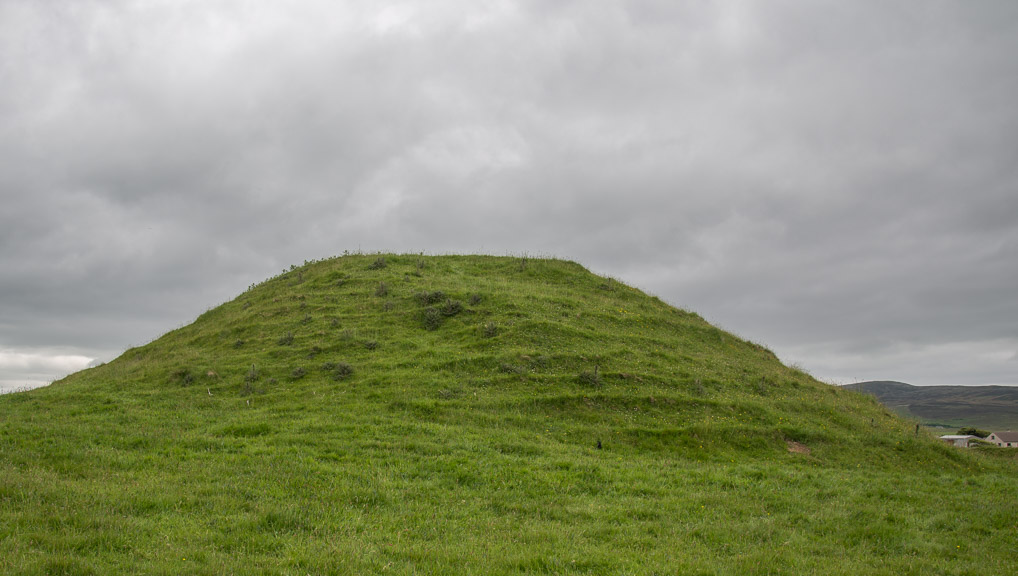
Maes Howe from the outside
The Vikings later entered the tomb and some of the stones internally are covered in Viking runes, which is a Viking alphabet. The runes are essentially Viking graffiti saying things like “Thorfinn Skullsplitter woz here”. Unfortunately we were not allowed to take any photographs inside.
Following our visit to Maes Howe we went to a collection of neolithic sites, all very close to each other, on the banks of a loch. These were the Standing Stones of Stenness, the Barnhouse Settlement, and the Ring of Brodgar. All of these are about 4,500 to 5,000 years old and to give some perspective pre-date all of the Egyptian pyramids and are probably a few hundred years older than Stonehenge.
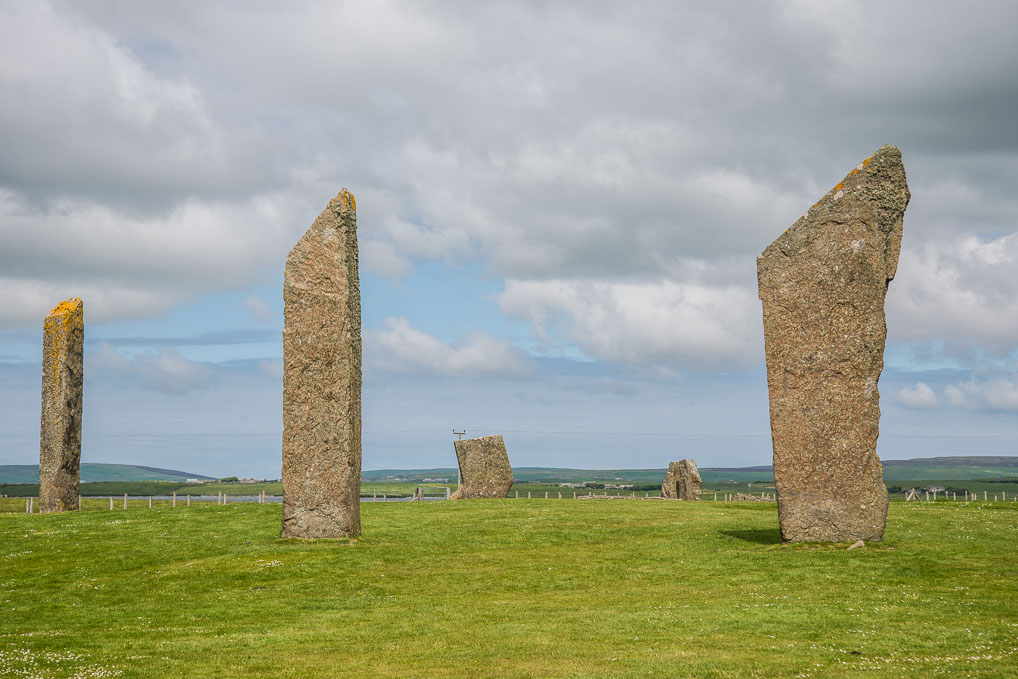
Standing Stones of Stenness
The Standing Stones of Stenness is a stone circle consisting of thin sandstone slabs with up to 20 feet showing above the ground. They are very atmospheric in their position on low lying land next to the loch. Adjacent to the stones recent excavation has revealed some stone age houses known as the Barnhouse Settlement. There are the remains of numerous small round dwellings which were built from local sandstone.

House from Barnhouse Settlement
Less than half a mile away is the Ring of Brodgar, a much larger stone circle, which like Stenness and Maes Howe is surrounded by an impressive mud ditch and wall, known as a henge. All of the first four sites we visited are thought to have been connected in some way in neolithic culture.
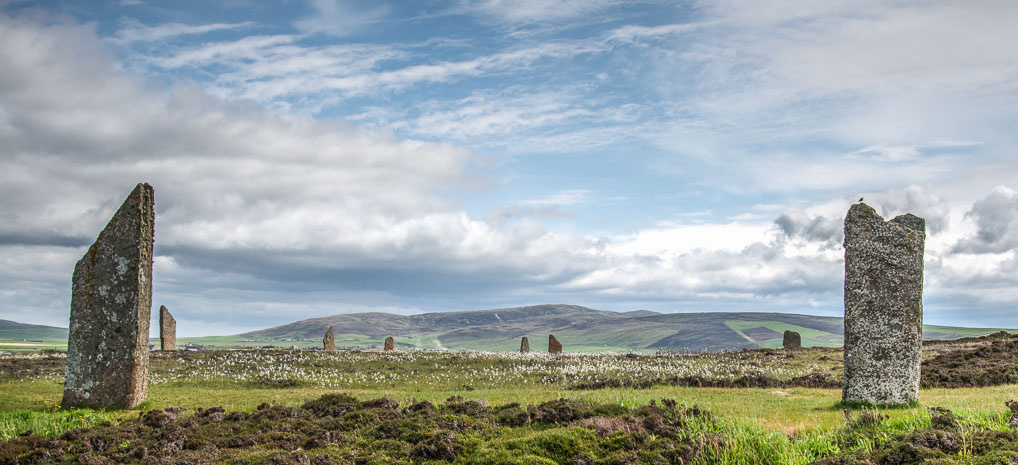
Ring of Brodgar
Our final neolithic site was a small tomb, the Unstan Chambered Cairn, which had been recommended because it could be visited unaccompanied. The entrance tunnel was even smaller than at Maes Howe and I had to crawl on my hands and knees to get inside. Once through the tunnel it expands into a slightly differently constructed stone chamber, with stones vertically erected to separate the burial spaces. Again a very awe inspiring building given its antiquity.

Interior of Unstand Chambered Cairn
We have not yet finished visiting Orkney’s neolithic sites, but what we have seen today gives pause for thought. 5,000 years ago, a society which had no metal, was numerous and organised enough on these isolated and northerly islands, to spend thousand of manhours constructing these monuments with methods and materials modern day man would struggle to use, without the aid of modern machinery.
Already exhausted, but knowing our third day on the island was likely to be inclement, we decided to complete the day with a visit to Orkney’s capital Kirkwall. Here we first visited St. Magnus’s Cathedral which is the finest medieval building in northern Scotland. It was started in the 12th century by the Viking Earls of Orkney. It is one of the nicer Cathedrals I have visited in the last 18 months, and I’ve visited many. Firstly it is small and the interior had an intimate feeling. Secondly it is constructed from a deep red sandstone and this gives a very different and softer feeling to the usual pale sandstone cathedrals of England and Northern France. The walls are lined with the various headstones that were previously placed above bodies buried under the floor. Each of them contained a chilling skull and crossbones inscribed on it!

St. Magnus’ Cathedral
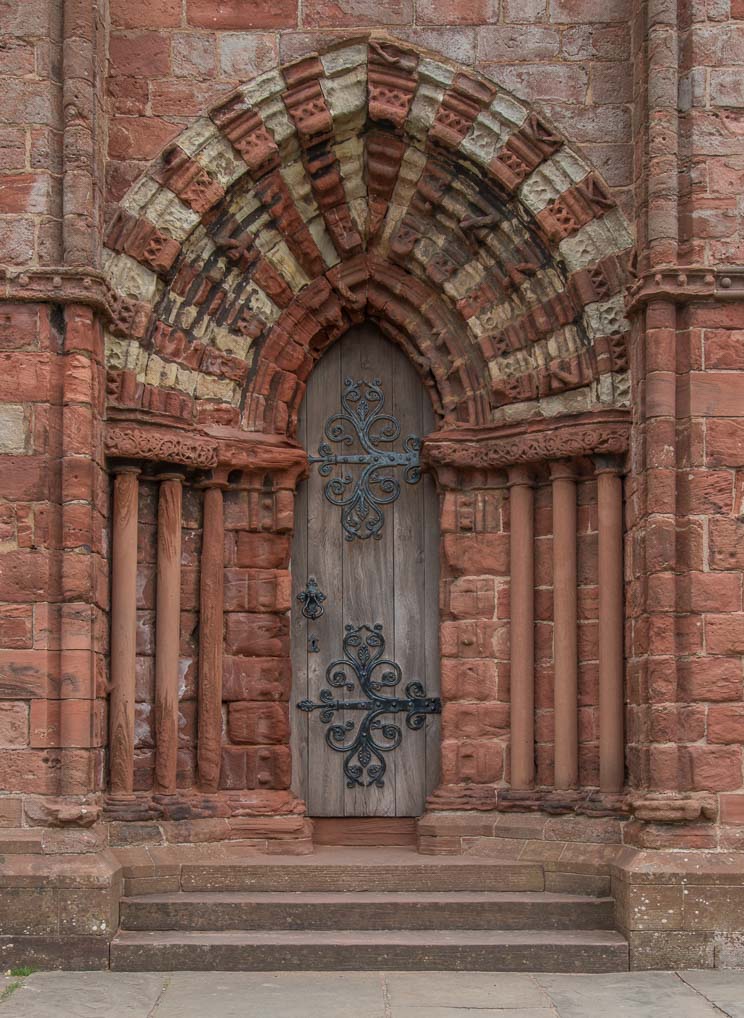
Norman Door on the Cathedral
From the Cathedral we visited the palace of the 17th Century Earl of Orkney, who met a sticky finish at the end of the hangman’s rope for treason. It is supposed to be one of the finest renaissance buildings in Scotland and perhaps at the time of its construction it was, but much of it has now fallen down and although you can get a feeling for the place from what is left, I was not overly impressed. Sarah however, really enjoyed this building.
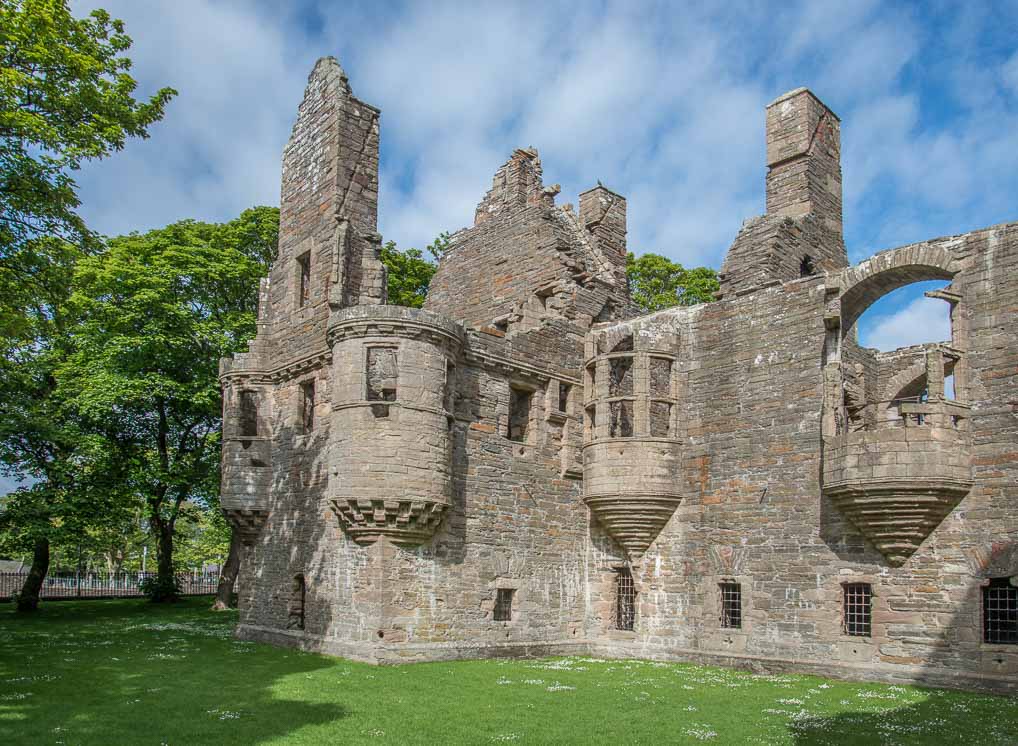
Earl’s Palace
Our final site on this exhausting day was the adjacent and much older Bishop’s Palace. I must say I did not give this my full attention, it being the eighth visit of the day. Like the Earl’s Palace it is now a shell, although the walls are mostly still standing. Perhaps on a less busy day it might have been mildly interesting but I have to say that by now I had had enough!
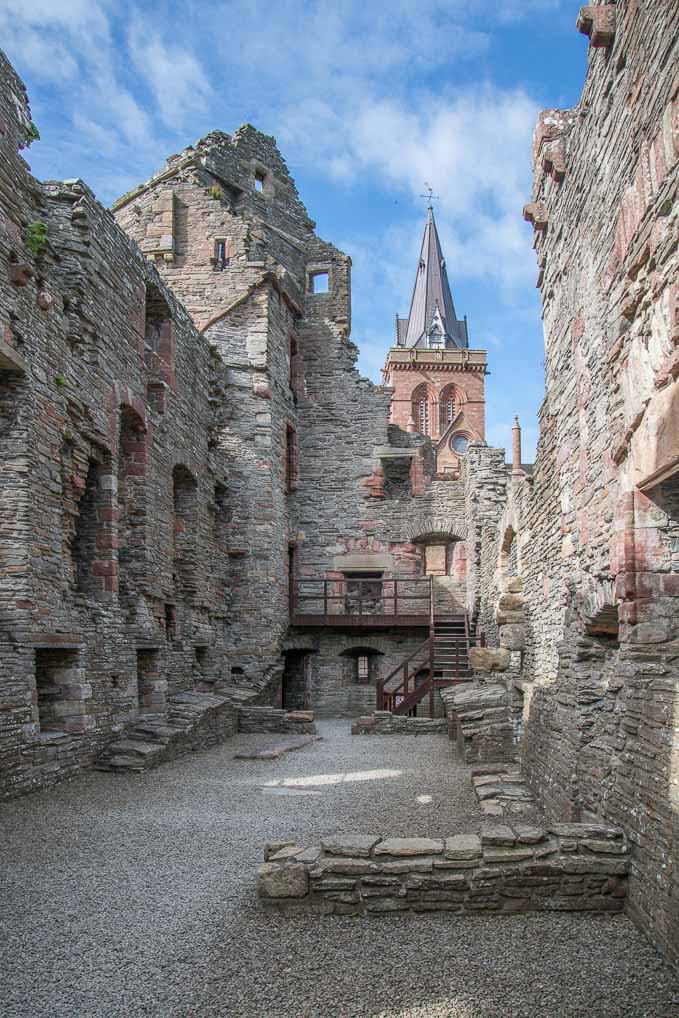
Bishop’s Palace
Tomorrow having recharged our batteries, there will be more neolithic sites and perhaps some birding! I bet you can’t wait!!
